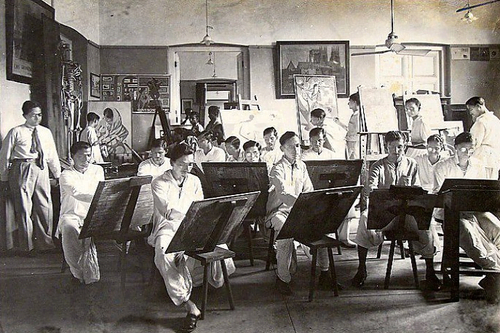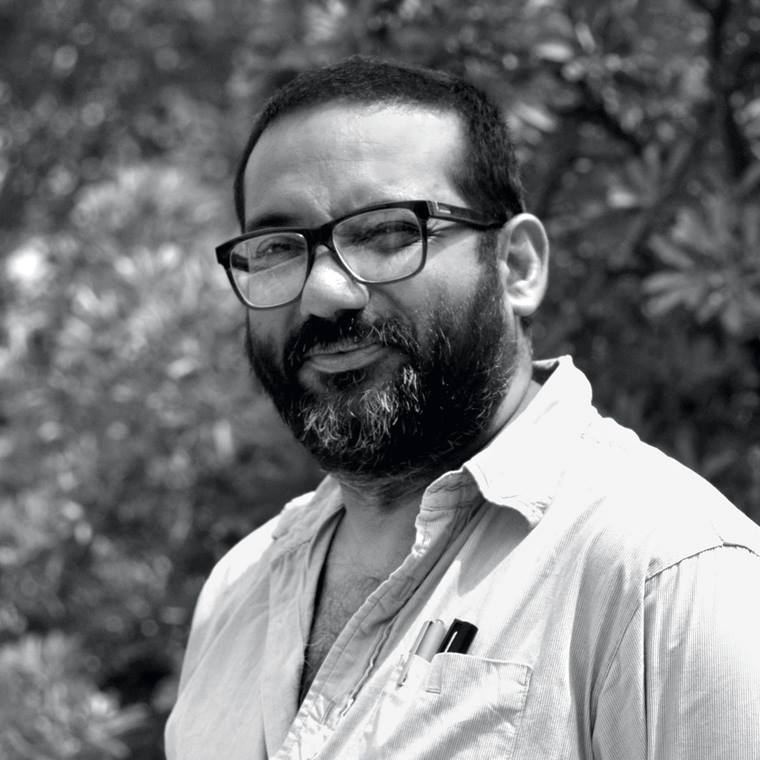It was the year 1929; Mukul Dey was the principal of the Government School of Art, Calcutta. It was the first noted exhibition of Jamini Roy’s career. The show which brings him into the spotlight for the first time—was indeed a momentary spotlight. But the exhibition carries out the first time an Indian artist who was working on Indian art rather than any sophisticated western art.

It is indeed a question, why it took so many years to look upon the artists who were sweating and bleeding for Indian art? The answer to this question hides in the phase of time; it was the time when Bengal was under the heavy influence of British and western cultures. It was an inferiority complex among the curators and public which was neglecting the art of the soil. Any artist who has a different perspective on art that doesn’t match with the western culture deem to get less attention. It was the time when art was not as broad as it is today. There were a lot of conservatives in the art world who wanted to be a type of superior over the eastern art but it is a truth that art cannot be ignored whether it is western, eastern, or middle.
But, what was the reason that an ignored art started getting attention? Opening the door of the past lead us to the life of people who were providing attention and appreciation to this art. The first person who was exhibiting the art of Jamini Roy was Mukul Dey. The person came to India in 1927 from Britain. Well, in Britain Mukul Dey saw the appreciation for some of the Indian art and it gives him a chance to experiment with society in India. Finding the fact that the Indian arts are getting appreciation in Britain made him realize the true potential and effect of Indian art. He came to India and got a chance to exhibit Jamini Roy’s work. It was one of the first times when Indian art was getting recognized.
In that phase of time, an incident happens too small but leads to an enormous effect on the history of Indian fine art. Rudyard Kipling gifted an Indian Kalighat Painting to the queen. It was definitely a small gesture but it influences the whole system of the art world after the love and appreciation it got from the royal house.
The exhibition was held from Monday, 30 September 1929 to 07 October 1929. The chief guest was the editor of ‘The Statesman’ Alfred H. Watson. The editor’s speech was indeed philosophical and soft but there is one thing which is worth noting, he motivated the people that the art becoming more of a public interest work than the décor of the royals. This point of view was indeed ahead of the time. He also mentioned that people should buy the art of the blooming artist as it is well worth a thousand times more in the future.

Even after this exhibition and support from the different arena, Jamini Roy had to struggle more for the identity he needed. It is a little contradictory that Rabindranath Tagore and other renowned artists were silent over neo-patua art.
The works were definitely amazing but the impression of the artist was under the scope and there was no one to understand it better than the Mukul Dey. Choosing an Indian artist who is on the constant side of the art world was never an easy step. It was indeed a choice of likeness towards the art but neglecting a good talent only due to the likeness is not a good judgment. Moreover, India was getting new realism in the art world and Jamini Roy was the torchbearer of that time. It is understandable from the fact that a person who is unknown to the artists is now getting a chance in the exhibition is something enjoying and entertaining.
In 1929 India, basic requirements were more important than buying a decorative piece of art. It was necessary for the people to work for the food and cloth than enjoy and appreciate an artwork. The economical and social situation of India was timid; it was the time when good art was only appreciated by the elites and the common men were only seeing it as a piece of decoration. Working on art in the time of the great depression and pre-independence was more than risky. It was the time when you have to invest your time, money, and talent for your work without thinking about any kind of returns. There were many underdogs and they all were just scratching the floor to come with the best ideas to resurrect the old Indian beauty in the art world.
Choosing a good subject can be easy but making a subject more legendry and style more powerful is what makes Jamini Roy a true artist. There was indeed a vast talent in him but there was a need for exploration and acceptance for his art and it was worked by the Mukul Dey. Before Mukul’s interception in his art world, it was hidden behind the curtain. The growth of the artist was only recognized by the elite after the Jamini Roy exhibition of 1929.
If we compare between the time of colonial and post-colonial era of Indian art then we will get to know about the freedom of expression of the artists in the present time is more and more elaborative than the past one. It is indeed due to the freedom they got from the Indian viewers but there are many other things that were influencing the colonial era artists and those were the finance and social structure of India. In modern contemporary art, we see the actual artist’s expressions without any hesitation. In the colonial era, we saw the expressions consists of pain, sadness, joy, and other emotions only with the indications and more of a westernized mysterious way of expressionism. In Jamini Roy’s work, we can reject the western medium of expressionism and come with the Indian simplistic approach without fading the emotions and the fables of the art.

Vikash Kalra is a self-taught artist & writer based in New Delhi whose work has been exhibited across India and is held in several private and corporate collections.
https://www.vikashkalra.com/web/
Leave a Reply